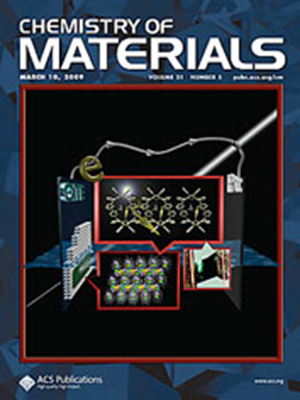Reversible On-Surface Metalation and Demetalation of Porphyrins in a Solvent-Free Ultrahigh-Vacuum Environment
IF 7.2
2区 材料科学
Q2 CHEMISTRY, PHYSICAL
引用次数: 0
Abstract
Controlling molecular interconversions reversibly is of great interest in chemistry. Reversible molecular interconversions have been extensively realized on solid surfaces by the regulation of intermolecular noncovalent interactions and intramolecular covalent bonds. Among others, molecular reactions involving the reversible tuning of intramolecular covalent bonds have typically been induced by local manipulations on individual molecules using a scanning probe microscopy (SPM) tip. However, reversible control of on-surface molecular reactions in a global manner remains challenging. In this work, by a combination of scanning tunneling microscopy (STM) imaging, X-ray photoelectron spectroscopy (XPS) measurements, and density functional theory (DFT) calculations, we report the reversible metalation and demetalation of porphyrin molecules on Au(111) in a controllable and global manner in a solvent-free ultrahigh-vacuum (UHV) environment by providing different atmospheres. The universality of such reactions involving the alkali metal Na was demonstrated by two types of porphyrins with different molecular backbones, while the on-surface metalation with the transition metal Co forming Co-porphyrin was found to be unidirectional. DFT calculations revealed the driving force for their different demetalation behaviors and further illustrated the critical role of extrinsic H atoms in the demetalation pathways. Our results represent a general strategy to reversibly steer the on-surface molecular metalation and demetalation, which should provide fundamental understanding of reversible molecular interconversions.

在无溶剂的超高真空环境下卟啉的表面金属化和脱金属
可逆地控制分子间的相互转化是化学领域的一个重要课题。通过调节分子间非共价相互作用和分子内共价键,在固体表面上广泛实现了可逆分子间转化。其中,涉及分子内共价键可逆调谐的分子反应通常是通过使用扫描探针显微镜(SPM)尖端对单个分子进行局部操作来诱导的。然而,在全球范围内对表面分子反应的可逆控制仍然具有挑战性。在这项工作中,我们通过扫描隧道显微镜(STM)成像、x射线光电子能谱(XPS)测量和密度泛函数理论(DFT)计算相结合,报告了在无溶剂的超高真空(UHV)环境中,卟啉分子在Au(111)上以可控和全局的方式进行了金属化和脱金属化。两类具有不同分子骨架的卟啉证明了这种涉及碱金属Na的反应的普遍性,而与过渡金属Co形成Co-卟啉的表面金属化则是单向的。DFT计算揭示了它们不同脱金属行为的驱动力,并进一步说明了外在H原子在脱金属过程中的关键作用。我们的研究结果代表了可逆地引导表面分子金属化和脱金属化的一般策略,这应该为可逆分子相互转化提供基本的理解。
本文章由计算机程序翻译,如有差异,请以英文原文为准。
求助全文
约1分钟内获得全文
求助全文
来源期刊

Chemistry of Materials
工程技术-材料科学:综合
CiteScore
14.10
自引率
5.80%
发文量
929
审稿时长
1.5 months
期刊介绍:
The journal Chemistry of Materials focuses on publishing original research at the intersection of materials science and chemistry. The studies published in the journal involve chemistry as a prominent component and explore topics such as the design, synthesis, characterization, processing, understanding, and application of functional or potentially functional materials. The journal covers various areas of interest, including inorganic and organic solid-state chemistry, nanomaterials, biomaterials, thin films and polymers, and composite/hybrid materials. The journal particularly seeks papers that highlight the creation or development of innovative materials with novel optical, electrical, magnetic, catalytic, or mechanical properties. It is essential that manuscripts on these topics have a primary focus on the chemistry of materials and represent a significant advancement compared to prior research. Before external reviews are sought, submitted manuscripts undergo a review process by a minimum of two editors to ensure their appropriateness for the journal and the presence of sufficient evidence of a significant advance that will be of broad interest to the materials chemistry community.
 求助内容:
求助内容: 应助结果提醒方式:
应助结果提醒方式:


